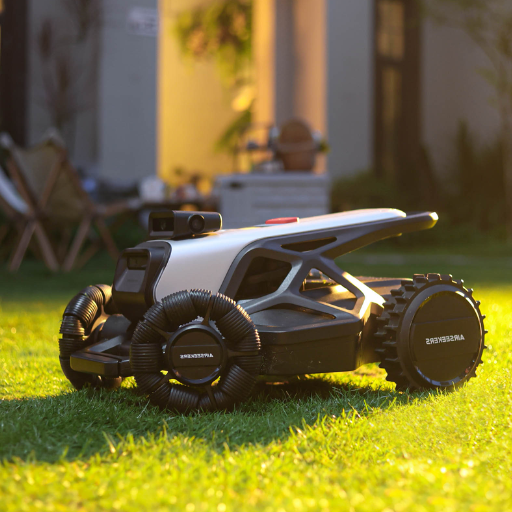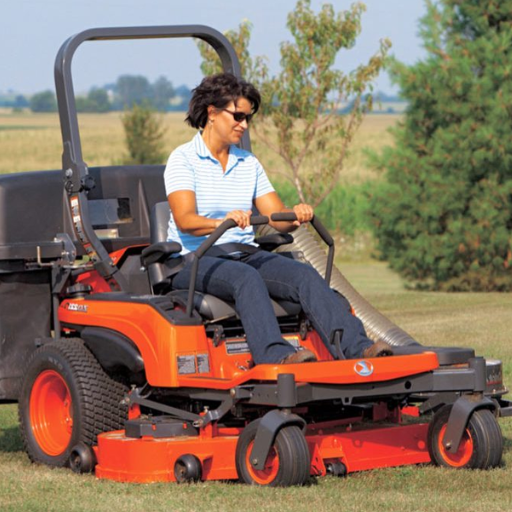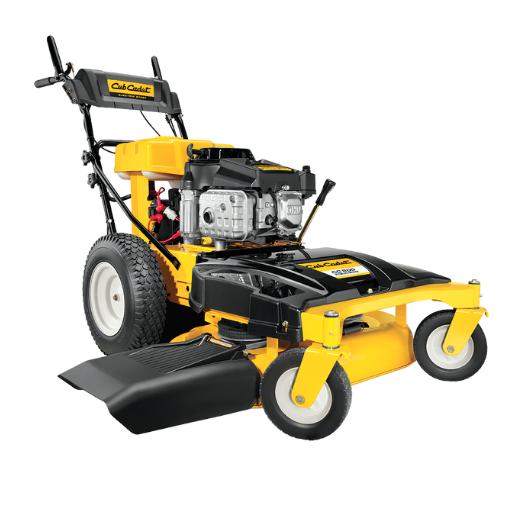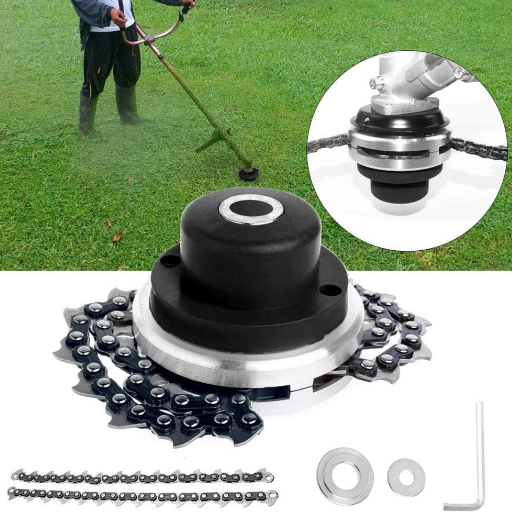The word “Zamboni” today goes far beyond just an industrial machine- the irony lies in it becoming a pop-cultural symbol for the image of an ice rink with a glistening, smooth, glassy surface. A hockey lover or a fan of figure skating, or just anybody who drops by randomly at an ice arena, must have stood there watching, mesmerized, as this beauty glides around on the ice. But how much do you know about Zamboni? This book takes you through the history, the engineering marvels behind it, and the lasting impact of Zamboni to find out how it became an indispensable partner to any ice sport worldwide. From its fall into obscurity to a widespread pop insignia, we’ll cover how this famous ice resurfacer came into being and why it remains so close to the heart of all ice rinks.Click here to read more
How Does a Zamboni Ice Resurfacer Work?
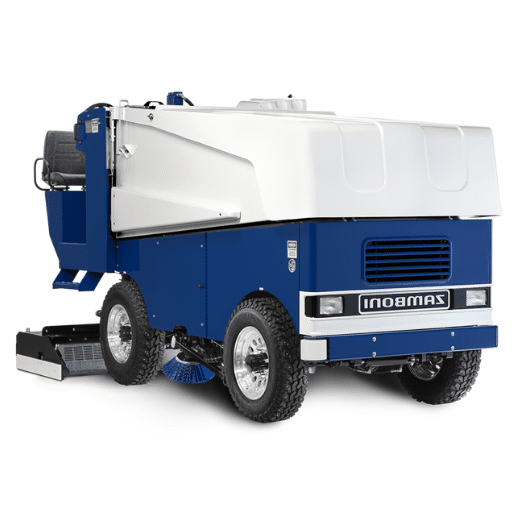
An ice resurfacer’s working principle, or Zamboni, involves slicing off a thin layer of ice using a sharp steel blade. Any grooves or imperfections created by skating and gameplay are thus removed. At the same time, the machine shaves off the ice in the form of snow and collects it into a tank on board. Upon shaving, the Zamboni applies a layer of water, warm and hot, upon the surface to clean it while filling up small cracks. Hot water seems to melt more evenly and hence comes up with a smooth and durable ice sheet. Therefore, shaving, collecting snow, and flooding ensure the rink is restored to optimum skating conditions.
What Are the Main Components of a Zamboni?
A Zamboni machine has several main components collaborating to resurface an ice rink. A detailed breakdown of these main parts is given below:
- Conditioner
Located at the rear of the machine, the conditioner is a large, box-shaped structure. A fine blade shaves the ice, and the height of the blade is usually adjusted according to how much of the ice surface is to be removed, from a few millimeters to an inch. The shaved ice is collected by a screw conveyor under the conditioner and conveyed into an onboard storage tank.
- Blade
A stainless steel precision blade is required for smoothly cutting the ice. Zambonis use variations of blade lengths, usually between 77 and 84 inches, depending on the model. The blades are sharpened finely and need frequent maintenance to keep them perfectly level.
- Snow Tank
Snow tanks collect the shaved ice or snow within the machine. Contemporary Zambonis can hold a few cubic feet of ice shavings; however, average capacity may be around 100 cubic feet, which varies with the model.
- Water System
The two water lines, the first using warm water for cleaning and the other hot water for resurfacing, are critical to ensure a smooth finish. The warm water cleans away debris and snow from the ice, whereas the hot water finds the micro cracks and gives the finish its glossy, seamless look.
- Augers
An auger collects the ice that the blade shaves off. Augers operate through spiral rotation, driven by the movement of snow.
- Propane, Electric, or Compressed Natural Gas (CNG) Engine
A Zamboni can be powered by either internal combustion engines running on propane or CNG or by an electric motor. Electric Zambonis grow in stature, especially with newer environmental concerns, due to their clean and efficient mode of operation, providing an emission-free working environment.
- Hydraulic System
Hydraulic systems power certain mechanical functions of the Zamboni, such as raising and lowering the conditioner, controlling the snow tank, and operating the augers.
- Wash Water Recovery System (in Advanced Models)
The wash water recovery system is integrated into many modern Zamboni machines. This system filters and recycles the cleaning water to reduce waste and support sustainability and operational efficiency.
- Tires and Steering Mechanism
Zamboni has heavy-duty tires that give it great traction on ice. It also has advanced steering mechanisms for precision control, allowing it to cover the rink in minimal time systematically.
These primary components allow a Zamboni to restore and smooth the ice surface to professional standards. Modern iterations, such as the electric Zamboni 650 series, have been designed to reduce energy consumption, ensure zero-emission technology, and improve functionality for rapid operational capabilities.
How Does the Ice Resurfacing Process Occur?
|
Key Point |
Description |
|---|---|
|
Shaving the Ice |
Blade removes a thin ice layer for smoothness. |
|
Collecting Shavings |
Augers move shavings to a snow tank. |
|
Washing the Ice |
Wash water cleans debris and fills deep cuts. |
|
Squeegeeing |
Towel spreads water evenly and removes excess. |
|
Laying Fresh Water |
Clean water layer fills grooves and freezes. |
|
Blade Maintenance |
Sharp blades ensure effective ice cutting. |
|
Consistent Driving |
Uniform speed prevents uneven ice resurfacing. |
|
Water Management |
Avoid excess water near boards to prevent buildup. |
|
Timing |
NHL rink: 8-10 mins; Olympic rink: 10-12 mins. |
|
Towel Cleanliness |
Clean towels improve ice quality. |
What Role Does the Layer of Hot Water Play?
The layer of hot water placed during the resurfacing process holds the utmost importance for making the ice smooth and permanent. Keep in mind these five points about its significance:
- Filling Imperfections: Hot water fills very minute cracks, grooves, and even scratches in the existing ice surface, guaranteeing a smooth, even top surface.
- Bonding Layers: Hot water solidly binds between the layers of old-in ice and new-in air for higher structural strength.
- Purity of the Ice Surface: Hot water minimizes air bubbles while freezing, creating denser, crystal-clear ice that is necessary from a performance and aesthetic standpoint.
- Melting the Existing Surface: Depending on the temperature of the water, the hot water melts the existing ice surface crust to some degree, thereby affording the perfect base for the fresh layer.
- Fast Freeze: Hot water freezes faster because the release of trapped gases during heating produces a strong and smooth surface.
All these factors give rise to a good quality of professional ice required for skating and hockey activities.
The History and Evolution of the Zamboni Ice Machine

The name Zamboni honors one of the ice resurfacing machines known to create a perfect floor for skating and sports. Gebi Franzi, an inventor and mechanic, developed the original idea and first model in 1949 at Paramount. Their idea was to modernize an old manual resurfacing operation with several workers involved, which was long and inefficient.
The first machine, Model A, was constructed with leftover war materials, including a Jeep chassis. This suggests that even before the 1950s, Zamboni Company started to gain industry recognition and real acceptance from professional venues, including those operated by the National Hockey League.
Over the years, the Zamboni machine has evolved in terms of technology. The new generation has precision controls, improved fuel efficiency, and electric/electro-hybrid variants to reduce environmental impact. According to market data, electric Zambonis will become increasingly viable in 2023 as they are emission-free, a sustainable option for indoor ice rinks. The new machines feature GPS technology and are automated mainly to maintain the ideal ice level.
Having sold over 12,000 worldwide, Zamboni is the biggest name in ice resurfacing. Its dominance will remain due to innovative efforts that bring forth yet another generation of the custom machine, defined by innovations directed towards efficiency and sustainability. Now, Zambonis form an integral part of the ice arena experience, balancing precision, quality, and the undying legacy of Frank J. Zamboni’s famous invention.
Who Was Frank Zamboni?
Inventor, engineer, and man-weighing-big-time in the ice-rink world, Frank J. Zamboni was bestowed the magna pater title for inventing the first ice resurfacing machine. Maintenance of any ice rink worldwide became a new kind of job, officially dealt with in Zamboni’s time.
How Was the Ice Resurfacing Machine Invented?
The inception of the ice resurfacing machine was a matter of necessity and Frank J. Zamboni’s innovative vision. Before 1949, maintaining a respectable, smooth ice surface was grueling and time-consuming. Employees had to scrape the dirt from the ice, layer it with water to compensate for the gouges, and wait for the water to freeze, which could have taken many hours.
Zamboni had an ice arena in Paramount, California, where he witnessed the inefficiencies of the current method. Noting a dire need for a faster and more consistent solution, Zamboni set out to engineer a machine that could accomplish the resurfacing process in one pass. The chassis of a Jeep and various parts from war surplus machinery were cobbled together to create an apparatus that could, for the first time, shave ice, collect the shavings, and spread a thin uniform coating of water for a perfectly smooth ice surface.
Developed over two years of tests and improvements, the first prototype was named the Model A and could resurface a floor in 10 minutes or so, quite the improvement over manual work. Since then, Zamboni’s invention has evolved, with newer technologies and designs introduced to further enhance its efficiency, reliability, and ease of use. Nowadays, Zamboni machines can also be found in professional arenas, local rinks, and even international competitions, with over 12,000 machines produced by the brand as of 2023.
Yet, while Zamboni unceasingly created improvements even on the ice resurfacing machine, his persistence and invention also created a legacy that describes the industry today.
How Has the Zamboni Machine Changed Over the Years?
|
Key Point |
Description |
|---|---|
|
Invention Year |
Invented in 1949 by Frank Zamboni. |
|
Model A |
Built from war-surplus parts, including bomber gear. |
|
Model B |
Used Willys Jeep chassis for better efficiency. |
|
Model E21 |
The first NHL-used Zamboni debuted in 1954. |
|
Olympic Debut |
Used in 1960 Winter Olympics, Squaw Valley. |
|
Hydraulic Innovations |
Added snow-dumping and screw conveyor systems. |
|
Global Expansion |
Factories opened in Canada and Sweden. |
|
Electric Models |
Introduced eco-friendly electric-powered machines. |
|
Custom Builds |
Each machine is handmade and tailored. |
|
Modern Efficiency |
Faster, smoother, and more energy-efficient. |
Operating a Zamboni: Skills and Challenges
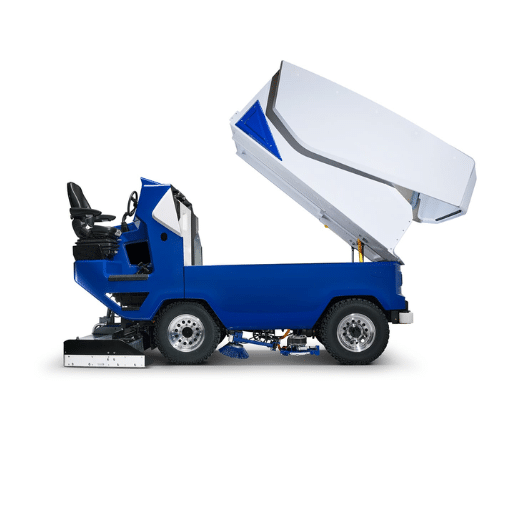
The operation of a Zamboni encompasses precise, careful, yet practiced maneuvers. First, drivers must master the art of gliding the machine smoothly, guaranteeing resurfacing with no ugly patches or unnecessary ridges. To achieve a consistent surface, they must play forth variations of speed, line up the direction of the machine, and make tight turns on the sides of the rink. An operator needs to monitor other finer aspects, such as water levels, blade sharpening, and snow collection. One of the most significant difficulties lies in the wide adjustment of ice conditions, equipment glitches, or keeping one’s mind present in repetitive drilling. But if training and experience go hand in hand, mastering all this can keep every ice surface high in quality.
What Does It Take to Become a Zamboni Driver?
Getting into Zamboni driving calls for training, concentration, and practical experience. It was about learning how to safely operate the machine, understand its workings, and cope with different ice conditions. Acquiring skills in precision driving, equipment maintenance, and troubleshooting were essential, and with experience, I came to maintain smooth ice every time for utilization.
What Are the Common Challenges When Driving a Zamboni?
|
Key Point |
Description |
|---|---|
|
Battery Management |
Avoid letting electric Zambonis die on ice. |
|
Ice Thickness |
Maintain 1-1.5 inches for optimal performance. |
|
Water Usage |
Balance water to avoid uneven or soft ice. |
|
Blade Adjustment |
Adjust blade to prevent over-shaving ice. |
|
Path Consistency |
Follow precise paths for even resurfacing. |
|
Temperature Control |
Ensure ice freezes quickly after resurfacing. |
|
Snow Tank Management |
Avoid overfilling to maintain efficiency. |
|
Sharp Blade Maintenance |
Keep blades sharp for effective ice shaving. |
|
Operator Training |
Requires skill to balance water and blade settings. |
|
Time Pressure |
Resurface quickly during busy schedules. |
How Do Drivers Maintain the Quality of the Ice?
Maintaining high-quality ice involves detailed care and special techniques to ensure a smooth and durable surface. The driver carefully watches the temperature of the ice rink, generally keeping it between 16°F and 24°F (-9°C to -4°C), considered the best range for smoothness and durability while being worked on. Using the Zamboni’s blade, they shave off a thin layer from the surface ice, removing imperfections such as gouges or scratches left by skates or equipment.
After shaving, the machine pours warm water onto the surface, usually at a temperature between 140°F and 160°F (60°C and 71°C). The warm water seeps into small cracks to create a unified, smooth layer. Some advanced machines also use filtration systems to ensure the water is pure and free from any impurities that might affect the ice quality. Drivers then adjust the activity-based water distribution, watering the high-wear zones, such as corners and goal creases.
Industry sources say consistent maintenance will prolong the life of ice and also help cut down on refrigeration bills. On average, one pass of a Zamboni takes about 7-10 minutes, and the driver resurfaces the ice every hour during heavy icing, such as during hockey games or skating. The machine and the surface of the ice are regularly inspected so that any faults can be detected early on for proper upkeep and safe operation of the rink.
Different Models of Zamboni Machines
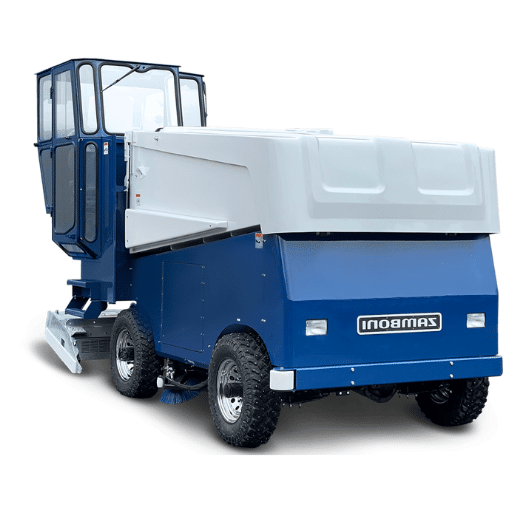
Zamboni offers several models of ice resurfacing machinery to cater to the various rink sizes and requirements. Most commonly used models are:
- Model 552: This is the most popular electrical option for indoor rinks since it uses less energy and causes fewer emissions.
- Model 650: A heavy-duty ice resurfacing machine for big rinks or venues needing frequent resurfacing.
- Model 526: The perfect compromise between power and fine control. Used often in medium-sized facilities.
Each model was considered for various rink requirements and kept in working order, always providing good ice.
What Are the Popular Zamboni Models?
|
Model |
Key Features |
|---|---|
|
Model A |
The first Zamboni was built in 1949 with surplus parts. |
|
Model B |
Improved design, used Jeep chassis for efficiency. |
|
Model E |
The first standardized model was used by NHL teams. |
|
Model 552AC |
Electric, lithium-ion or lead-acid battery options. |
|
Model 450 |
Compact, emission-free, quick charge capability. |
|
Model 700 |
Large capacity, designed for Olympic-sized rinks. |
|
ZX5 |
Latest model, automated features, laser leveling. |
How Do Different Models Cater to Various Arenas?
Zamboni caters to many arenas, depending on the needs of rink size, resurfacing frequency, and, sometimes, environmental issues. Here is a breakdown of how some of the models are set to serve different venues, depending on the features they offer:
- 650: Stretching to large rinks and high-traffic venues for efficient power application, the 650 is fitted with a high-capacity snow tank and an electric drivetrain to reduce emissions while maintaining a consistent ice quality. Thus, in professional sports arenas and events with large audiences, this model is utilized in obtaining ithe ce surface quickly but not at the expense of performance.
- 526: Meant for mid-size venues, the 526 tries to strike a balance between power and precision. The advanced blade technology, coupled with user-friendly controls, guarantees versatility for recreational rinks and semi-pro arenas. This combination of a fuel-efficient engine and small size allows it to endure frequent use while keeping operating costs low.
- 450: Best for smaller community rinks or venues with limited space, the 450 is compact and dependable. Its efficient ice-making system guarantees excellent surface conditions, making it very much favored by private or municipal facilities. The smaller size also offers greater maneuverability in confined spaces.
- Electric Models (e.g., Model 552AC or EL Series): Ecologically friendly models are for arenas that prioritize sustainability. These models are fully powered by electric systems, producing zero on-site emissions while operating quietly, making them perfect for indoor or urban areas.
Each model addresses specific ring considerations by implementing innovative technologies such as water-saving systems, energy-efficient motors, and customization options. By custom-building the features for other conditions, Zamboni assures that arenas of all sizes can maintain good ice quality while attaining better operational and sustainability targets.
What Innovations Have Been Made in Ice Resurfacing?
Electric and hybrid machines are all about innovation in ice resurfacing to reduce emissions and work more efficiently than conventional types. In addition, advances in water management systems, granular controls for distributing water, improve ice quality while saving resources. With customizable technology in diagnostics, performance monitoring, and real-time database analysis, operations have been eased to great sustainability and maintainability.
Customer Reviews and Feedback on Zamboni Ice Resurfacers
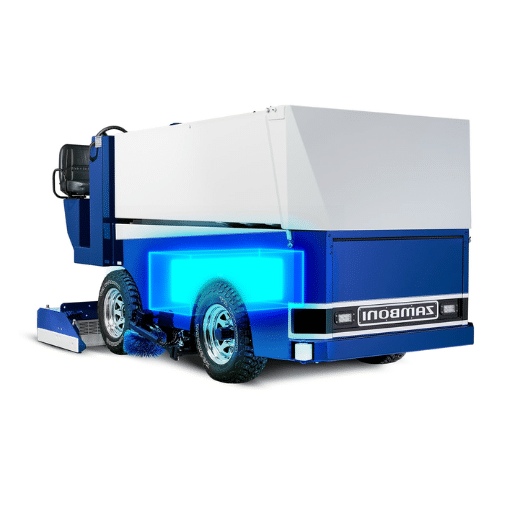
The most notable features that customers cite about Zamboni ice resurfacers pertain to reliability, user friendliness, and maintaining top-grade ice. Customers usually point out the durability of the machines- they continue to work well after intense usage. Furthermore, much of the feedback cites the environmentally friendly advantages of the machines, which include reduced emissions and superior energy efficiency. Some other benefits operators appreciate are easy controls and automated system,s which make maintenance somewhat of a breeze. On a general level, Zamboni machines have gained a reputable standing for innovation and performance, and they are used by ice rink professionals all around the globe.
What Do Users Say About the Zamboni Ice Resurfacers?
| Key Point | Description |
|---|---|
|
Ease of Operation |
Simple to operate and maintain. |
|
Low Operating Costs |
Efficient fuel and maintenance savings. |
|
High Residual Value |
Retains value over time, a solid investment. |
|
Innovative Features |
Includes laser leveling and lithium-ion batteries. |
|
Sustainability |
Reduced emissions with electric models. |
|
Durability |
Reliable and long-lasting machines. |
|
High Initial Cost |
Significant upfront investment required. |
|
Maintenance Needs |
Regular blade sharpening and upkeep are necessary. |
|
Global Recognition |
Preferred by most ice rink operators worldwide. |
|
Customer Satisfaction |
Generally favorable reviews for performance. |
How Do Customer Reviews Influence Purchasing Decisions?
Customer reviews are crucial to purchase decisions in today’s world, where online reviews can be accessed anytime. Recent findings show that 93% of customers report their buying decisions being influenced by online reviews, and 84% consider reviews equal to personal recommendations. For Zamboni ice resurfacers, favourable comments from ice rink operators and facility managers further strengthen their position as reliable, innovative, and efficient machines.
Such detailed feedback often elaborates on unique features worthy of mentioning for interested parties: energy efficiency, cutting down on costs, durability, etc. On the other hand, reviews offer some transparency by pointing to areas where improvements are needed. Thus, reviews stand as a worthy research tool for potential buyers. Trends in reviews, such as consistently high praise for the machines’ ease of use and maintenance, further consolidate the buyers’ faith in the product.
Google search trends show an upward movement in queries like “best ice resurfacer reviews” and “Zamboni customer feedback,” proving that customers look for third-party opinions before investing in high-value purchases. This highlights the role of digital word-of-mouth in legitimizing Zamboni as both a market leader and a trusted brand of ice resurfacing equipment. Genuine and in-depth reviews can sometimes be a deciding factor among thousands of buyers, making them feel confident and assured.
What Are the Common Praise Points and Criticisms?
When looking at customer reviews and feedback regarding Zamboni for ice resurfacing, there seem to be several recurring areas of praise and criticism. Below are five of the principal ones listed in detail:
Common Praise Points:
- Unmatched Performance and Efficiency
Refined in their awe of Zamboni machines for their superior surface preparation capabilities, the customers speak about how the equipment prepares ice surfaces that are enchanting in their smoothness in a very short time.
- Durable build quality
Positive remarks are often bestowed upon Zamboni products for their coffins, even under the most extreme usage conditions, maintaining their reputation for working efficiently.
- Easy to maintain
Customer reviews praise the accessibility of maintenance work on Zamboni machines- it does not make for much downtime or expense in the long run.
- Technological Advancements and Features
Customers appreciated constant innovation in developing more energy-efficient and environmentally friendly production processes with intuitive digital user interfaces.
- The name and customer support
Many buyers attest to the well-respected brand name and responsive customer service in ensuring great ownership experiences and timely resolution of emerging issues.
Common Criticisms:
- High Initial Cost
Regularly voiced concerns stem from Zamboni’s premium pricing of the equipment, which consequently deters smaller establishments and/or organizations operating on cost efficiency.
- Steep Learning Curve for New Operators
While the advanced features are highly praised, training new operators to actually use the machines takes time and effort.
- Limited Availability of Replacement Parts
Some reviews challenge the ability to quickly source particular replacement parts, which causes occasional operational delays.
- Noise Level of Older Models
Despite being the most technologically advanced generation, the older models received criticism for the noise level.
- Size Constraints for Smaller Rinks
Some felt that the standard Zamboni was less than ideally sized for smaller rinks, making moving around in compact spaces cumbersome.
It’s essential to know the praise points and criticisms to fulfill the customers’ needs and to understand the areas that need product enhancement.
References
-
Science of Hockey: Making Ice & the Zamboni – This page from the Exploratorium explains the mechanics and science behind the Zamboni ice resurfacer.
-
Video: What It’s Like to Drive a Zamboni – Northeastern University shares insights from their facilities crew on maintaining ice arenas.
-
The Ice Whisperer | It’s Your Yale – Yale University discusses the history and development of the Zamboni machine.
Frequently Asked Questions (FAQ)
Q: What is a Zamboni and who invented it?
A: A Zamboni is an ice-resurfacing machine designed to create a smooth sheet of ice, typically used in ice rinks. It was invented by Frank Zamboni in 1949.
Q: How does a Zamboni work to resurface the ice?
A: A Zamboni works by shaving the ice with a sharp blade, collecting the shavings, and then laying down a thin layer of water from the water tank, which freezes to form a smooth top layer of ice.
Q: Why is resurfacing the ice important in an ice rink?
A: Resurfacing the ice is crucial to maintain a smooth and safe ice surface for activities like ice hockey and ice skating. It fills in grooves and imperfections, providing a consistent arena ice experience.
Q: What role do edgers play in maintaining an ice rink?
A: Edgers are used alongside Zambonis to trim the edges of the ice rink, ensuring the entire ice surface is level and smooth, which is especially important in maintaining the quality of the sheet of ice.
Q: How often should the ice be resurfaced in an ice arena?
A: The frequency of resurfacing depends on the ice usage. Typically, ice is resurfaced between each hockey game or ice skating session to ensure optimal skating conditions.
Q: What are the main components of a Zamboni machine?
A: Key components include the blade for shaving the ice, the water tank for laying down a fresh layer of water, and the auger system to collect ice shavings at the rear of the machine.
Q: How has the Zamboni evolved since it was first invented?
A: Since Frank Zamboni invented it, the machine has evolved with advancements in power and refrigeration technology, improving the ice surface’s efficiency and quality.
Q: Are there other brands of ice-resurfacing machines besides Zamboni?
A: Yes, other brands like Olympia also manufacture ice-resurfacing machines, but Zamboni remains synonymous with the industry due to its history and innovation.
Q: What is the process of operating an ice resurfacer?
A: Operating an ice resurfacer involves driving the machine across the ice rink, managing the blade and water processes from the front of the machine, and ensuring even resurfacing throughout the ice arena.
Q: How does the refrigeration system impact ice quality?
A: The refrigeration system is essential for keeping the ice at a consistent temperature, which is critical for making ice that is smooth and durable, especially during professional ice events.




